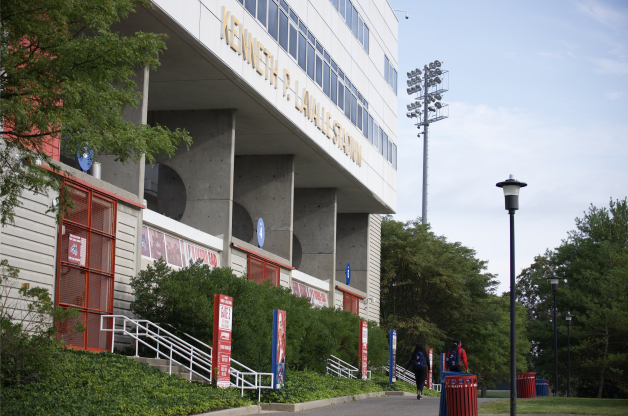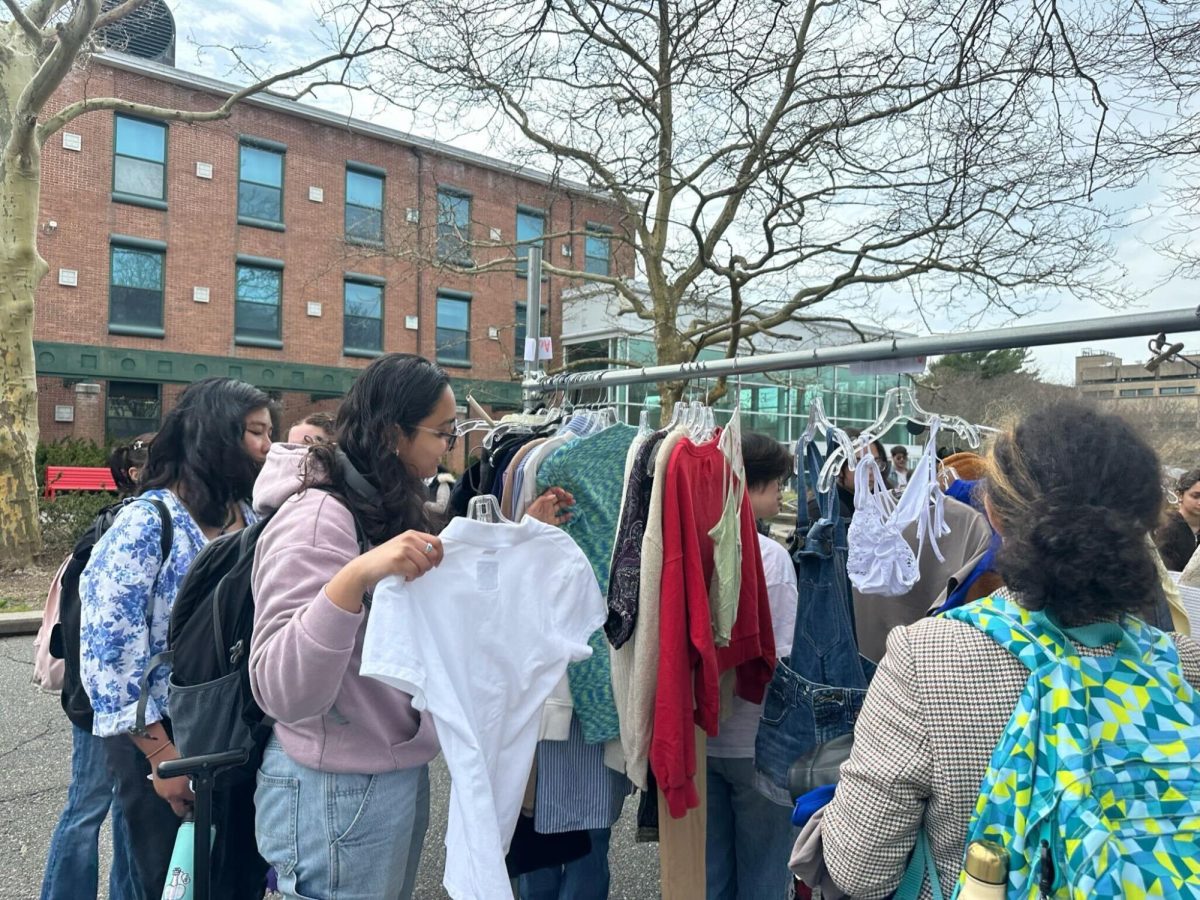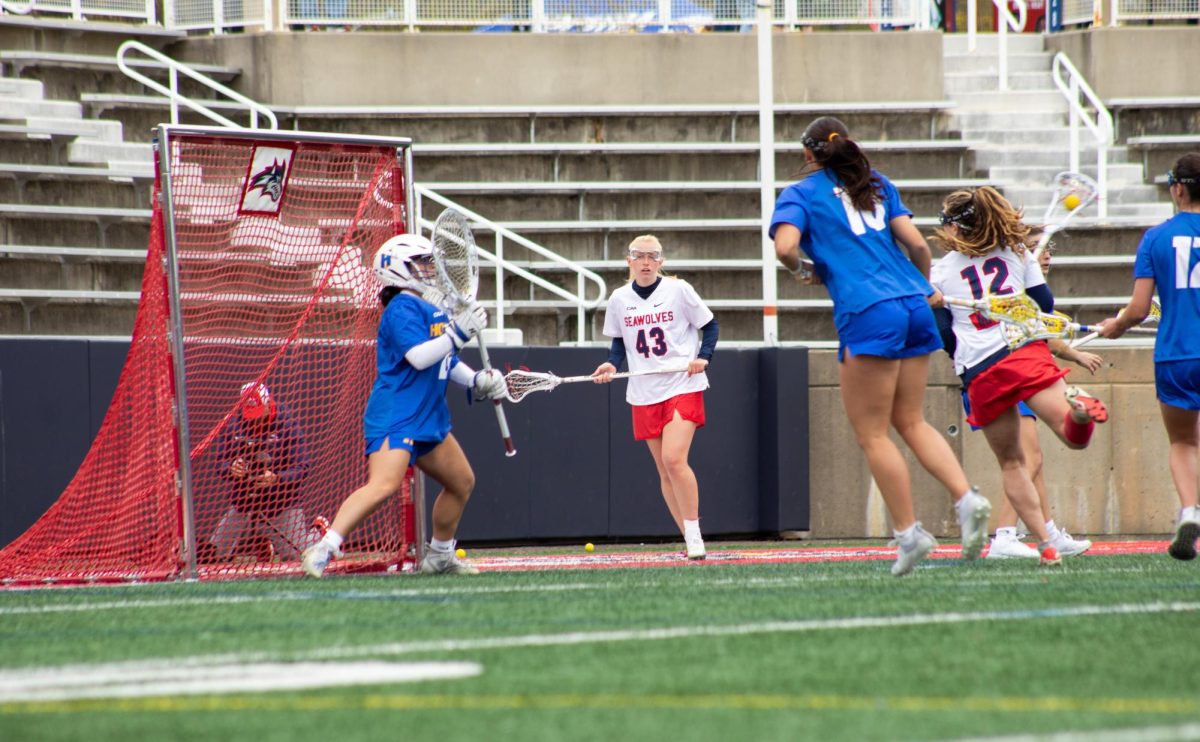
When the coronavirus pandemic hit the United States in March, college sports came to a screeching halt. Now in September, some conferences have resumed play, but the National Collegiate Athletic Association (NCAA) has kept one of the most important parts of collegiate athletics on pause — recruitment.
The NCAA instituted a ban on in-person recruiting in March and has extended the ban on a monthly basis. Other subsequent rulings have left coaches and administrators trying to hit a moving target while they attempt to do their jobs.
“I think it’s really required our coaches to be creative,” Stony Brook Director of Athletics Shawn Heilbron said in an interview with The Statesman. “We have a lot to showcase at Stony Brook, we’re very proud of what we have. And so, you know, for our coaches to figure out new ways, without having the opportunity for in-person visits has been important.”
Though some high school and club teams across the country have made efforts to return to play, the coaches at Stony Brook and across the NCAA have not been able to meet with any prospects in person. The result for many coaches has been a heavy reliance on Zoom and other video-conference apps to evaluate potential prospects.
“We were super proactive and came up with different ways to recruit,” Tobias Bischof said. Bischof is the head coach of the Stony Brook women’s soccer team. “[Zoom] works decently well for us, I would say, we created a Sparks page, what highlights Stony Brook and us as a program and then we organize now virtual tours [of campus].”
While the process of recruiting online is certainly new and challenging, some coaches like Kristin Belzung, head coach of the volleyball team, and Ryan Anatol, head coach of the men’s soccer team, see the benefits to a “Zoom workout” for new recruits. Now coaches have the opportunity to review a player and speak to them later in the year than they normally would.
“Honestly, it’s not a terrible thing,” Belzung said. “It gives some of the recruits a little opportunity to get to know themselves a little better and what they’re looking for so that when they get a little further — you know, they’re a little later in their career when they’re going through the recruiting process — but for us we’re still communicating, we’re trying to stay in touch with the people that we know we like, we’d like to see film when we can.”
Anatol has recruited online before, giving him a basis for transitioning to a completely online process.
“There has been a culture of having to recruit online through video, so we need to do a lot more of that now with local players,” Anatol said, discussing how his team has used video calls in the past to recruit players in other countries. “It’s not completely foreign to us, having to recruit online, but it is a little bit more challenging.”
However, in addition to their ban on recruiting, the NCAA has potentially further complicated the issue by ruling to grant all fall athletes another year of eligibility. Though Heilbron called the situation a “bit of a log jam,” every coach agreed that the eligibility ruling was necessary to do right by their athletes. This year’s graduating class, depending on their academic status, may choose to return as athletes next fall. Finances will also play into their decisions, as Heilbron mentioned that there will be a “conversation that we’ll have with our coaches” about how scholarships will be affected.
“Some guys may choose different[ly] for various reasons and then that will be respected, but the opportunity lies ahead for them to make sure that they have the opportunity to finish out their careers correctly,” football head coach Chuck Priore said.
Unfortunately for all parties, the end does not appear to be near just yet. As Bischof said, “We’re expecting in the next round… September 16, where the next NCAA ruling comes out, there is a good chance that the [recruiting dead] period gets extended even longer.”
Since all sports at Stony Brook are postponed until the spring, Heilbron and the athletic department’s main focus is clear — make the current situation work the best they can.
“Our goal right now is just for campus to operate in a healthy manner for us to be able to sustain what’s been going on,” Heilbron said. “We’ll get back to in-person recruiting but right now we’re here to be great partners and make sure the campus is able to continue running as effectively as possible.”




















